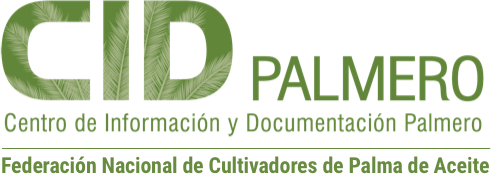Commercial scale validation of the optimal harvest point for the interspecific hybrid cultivar OxG Cereté x Deli

Disponible aquí Disponible aquí Disponible aquí Disponible aquí Disponible aquí Disponible aquí Disponible aquí Disponible aquí Disponible aquí Disponible aquí Disponible aquí Disponible aquí Disponible aquí Disponible aquí Disponible aquí Disponible aquí Disponible aquí Disponible aquí Disponible aquí Disponible aquí Disponible aquí Disponible aquí Disponible aquí Disponible aquí
Author
Sinisterra Ortiz, Kelly
Camperos, Jhonatan
Cortés, Ingrid
Caicedo, Arley
Castilla, Carlos
Ceballos, David
Estadisticas
Publicación:
Palmas; Vol. 42 Núm. 3 (2021); 15-23
2744-8266
0121-2923
Palmas; Vol. 42 Núm. 3 (2021); 15-23
2744-8266
0121-2923
Abstract
In Colombian palm cultivation, the sowing of hybrid OxG cultivars has increased, as a response to the disease of bud rot (PC). However, because there are differences in the management of these cultivars compared to that developed for E. guineensis crops, great research challenges have been generated in parallel to the development of the field crop. Among the aspects that have been investigated are pollination (due to the low natural viability of pollen from OxG crosses) and harvest criteria (since color is not a precise indicator of maturity and criteria vary between OxG crosses). To address these two aspects, Cenipalma has developed technologies: artificial pollination with ANA and the optimum harvest point (POC) for the four most widely planted OxG cultivars in the country. This document presents the results of a validation work whose objective was to validate the POC for the Cereté x Deli cultivar on a commercial scale, in two pollination scenarios (assisted and artificial). The ripeness of the bunches was evaluated at the time of cutting and their oil content in the processing plant. The work was developed in three phases. In Phase 1 (baseline), clusters pollinated with pollen (assisted pollination) were harvested and harvested according to the criteria of a Tumaco plantation. In Phase 2, bunches pollinated with pollen (assisted pollination) were harvested, which were cut according to the POC for the Cereté x Deli cultivar. Keywords: BBCH scale, oil extraction rate, artificial pollination. En la palmicultura colombiana se ha incrementado la siembra de cultivares híbridos OxG, como respuesta a la enfermedad de la pudrición del cogollo (PC). Sin embargo, debido a que existen diferencias en el manejo de estos cultivares comparado al desarrollado para los cultivos E. guineensis, se han generado grandes retos en investigación en paralelo al desarrollo del cultivo en campo. Entre los aspectos que se han investigado se encuentran la polinización (debido a la baja viabilidad natural del polen de los cruzamientos OxG) y los criterios de cosecha (ya que el color no es un indicador preciso de madurez y los criterios varían entre cruzamientos OxG). Para abordar estos dos aspectos, Cenipalma ha desarrollado tecnologías: la polinización artificial con ANA y el punto óptimo de cosecha (POC) para los cuatros cultivares OxG más sembrados en el país.
Este documento presenta los resultados de un trabajo de validación cuyo objetivo fue validar el POC para el cultivar Cereté x Deli a escala comercial, en dos escenarios de polinización (asistida y artificial). Se evaluó el estado de madurez de los racimos al momento del corte y el contenido de aceite de estos en planta de beneficio. El trabajo se desarrolló en tres fases. En la Fase 1 (línea base) se cosecharon racimos polinizados con polen (polinización asistida) y cosechados según el criterio de una plantación de Tumaco.
In Colombian palm cultivation, the sowing of hybrid OxG cultivars has increased, as a response to the disease of bud rot (PC). However, because there are differences in the management of these cultivars compared to that developed for E. guineensis crops, great research challenges have been generated in parallel to the development of the field crop. Among the aspects that have been investigated are pollination (due to the low natural viability of pollen from OxG crosses) and harvest criteria (since color is not a precise indicator of maturity and criteria vary between OxG crosses). To address these two aspects, Cenipalma has developed technologies: artificial pollination with ANA and the optimum harvest point (POC) for the four most widely planted OxG cultivars in the country. This document presents the results of a validation work whose objective was to validate the POC for the Cereté x Deli cultivar on a commercial scale, in two pollination scenarios (assisted and artificial). The ripeness of the bunches was evaluated at the time of cutting and their oil content in the processing plant. The work was developed in three phases. In Phase 1 (baseline), clusters pollinated with pollen (assisted pollination) were harvested and harvested according to the criteria of a Tumaco plantation. In Phase 2, bunches pollinated with pollen (assisted pollination) were harvested, which were cut according to the POC for the Cereté x Deli cultivar. Keywords: BBCH scale, oil extraction rate, artificial pollination.
Palabras clave:
BBCH scale, oil extraction rate, artificial pollination
Escala BBCH, tasa de extracción de aceite, polinización artificial
BBCH scale, oil extraction rate, artificial pollination
Escala BBCH, tasa de extracción de aceite, polinización artificial
Disponible aquí Disponible aquí Disponible aquí Disponible aquí Disponible aquí Disponible aquí Disponible aquí Disponible aquí Disponible aquí Disponible aquí Disponible aquí Disponible aquí Disponible aquí Disponible aquí Disponible aquí Disponible aquí Disponible aquí Disponible aquí Disponible aquí Disponible aquí Disponible aquí Disponible aquí Disponible aquí Disponible aquí


